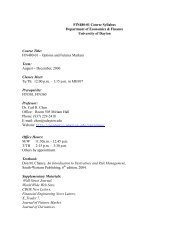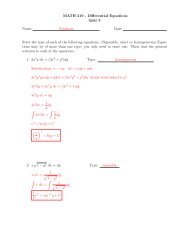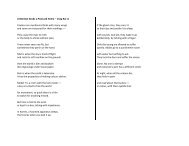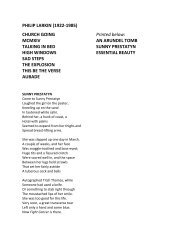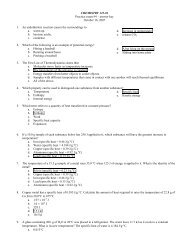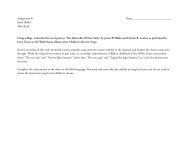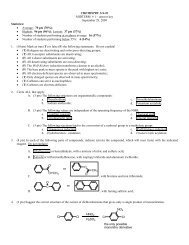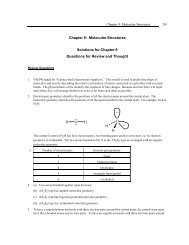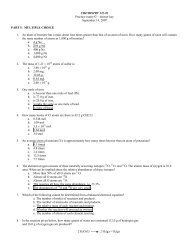Chap 26
Chap 26
Chap 26
You also want an ePaper? Increase the reach of your titles
YUMPU automatically turns print PDFs into web optimized ePapers that Google loves.
MONEY, BANKS, AND THE FEDERAL RESERVE 219<br />
B. Commercial Banks<br />
1. A commercial bank is a firm that is licensed by the Comptroller of the Currency or by a<br />
state agency to receive deposits and make loans.<br />
2. Table 10.2 shows the aggregate<br />
balance sheet of the commercial<br />
banks in the United States at the<br />
end of June 2003.<br />
3. A commercial bank’s balance sheet<br />
summarizes its business and lists the<br />
bank’s assets, liabilities, and net<br />
worth.<br />
4. The objective of a commercial bank<br />
is to maximize the net worth of its<br />
stockholders.<br />
5. To achieve this objective, banks make risky loans at a higher interest rate than the interest<br />
rate they pay on deposits.<br />
6. But the banks must balance profit and prudence; loans generate profit, but depositors must<br />
be able to obtain their funds when they want them.<br />
7. So banks divide their funds into two parts: reserves and loans.<br />
8. Reserves are the cash in a bank’s vault and deposits at Federal Reserve Banks.<br />
9. Bank lending takes the form of liquid assets, investment securities, and loans.<br />
C. Thrift Institutions<br />
1. The thrift institutions are savings and loan associations, savings banks, and credit<br />
unions.<br />
2. A savings and loan association (S&L) is a depository institution that receives checking<br />
and savings deposits and that makes personal, commercial, and home-purchase loans.<br />
3. A savings bank is a depository institution that accepts savings deposits and makes mainly<br />
mortgage loans.<br />
4. A credit union is a depository institution owned by a social or economic group such as a<br />
firm’s employees that accepts savings deposits and makes mostly consumer loans.<br />
D. Money Market Mutual Funds<br />
A money market fund is a fund operated by a financial institution that sells shares in the<br />
fund and holds liquid assets such as U.S. Treasury bills or short-term commercial paper.<br />
E. The Economic Functions of Depository Institutions<br />
1. Depository institutions make a profit from the spread between the interest rate they pay on<br />
their deposits and the interest rate they charge on their loans.<br />
2. Depository institutions provide four main types of services:<br />
a) Create liquidity by accepting deposits that can be withdrawn instantly and using these<br />
deposits to make long-term loans.<br />
b) Minimize the cost of obtaining funds by pooling many people’s relatively small deposits<br />
into large sums that can be loaned to many borrowers.<br />
c) Minimize the cost of monitoring borrowers by specializing in this activity.<br />
d) Pool risk by lending to many different borrowers so that if one borrower is unable to<br />
pay back the loan the lender loses only a small fraction of total deposits.




